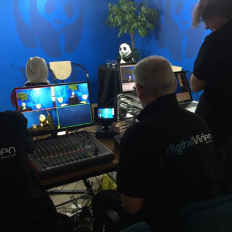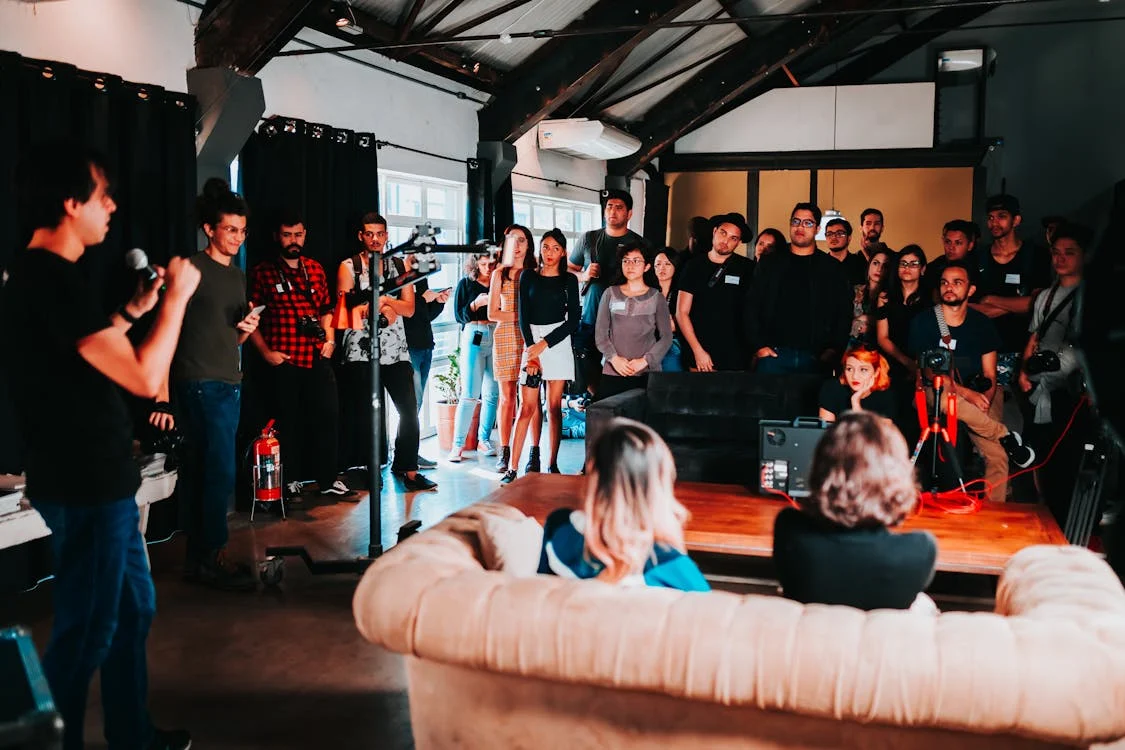Unlike physical events, where success can be felt and seen, the success indicators of a digital event are not always visible to the naked eye: measuring the success of a digital event goes beyond simply counting the participants. It involves deeply understanding how an event resonated with its target audience and assessing whether the objectives have been met.
In this article, we will explore different ways to measure the effectiveness of your digital events, from key performance indicators (KPIs) to final participant satisfaction, through engagement and return on investment.
Choosing KPIs
KPIs are essential metrics that will help you assess the effectiveness of your digital event based on the objectives you have set. Choosing the right KPIs is crucial for obtaining an accurate measure of your event’s success.
Depending on your goals, KPIs can vary. For example, if your goal is to increase brand awareness, relevant KPIs might include the number of participants, the extent of media coverage, or the volume of mentions on social networks. If your goal is lead generation, focus on the number of contacts collected or the number of sign-ups for a free trial or demonstration.
Measuring Engagement
Engagement is a key indicator of the success of a digital event. Engagement-related KPIs can include active participation rate, time spent on the platform, the number of questions asked during Q&A sessions, and interactions on social media. These metrics help you understand how the audience interacted with your content and your brand.
Tracking Conversion
For events aimed at converting participants into customers or leads, KPIs such as the conversion rate of registrations, the number of resource downloads, or tracking post-event actions (for example, signing up for a demo or purchasing a product) are crucial. They directly reflect the impact of your event on your business goals.
Post-event Analysis
After the event, it’s important to follow KPIs that measure long-term success, such as the retention rate of participants, the increase in social media followers, or the improvement of brand perception measured by satisfaction surveys.
Data Collection Techniques
Once you’ve identified your KPIs, the next step is to collect the necessary data to measure your success.
Using Built-in Data Collection Tools, Surveys, and Questionnaires
Many digital event platforms offer integrated tools for collecting data on participants and their behaviors. Take advantage of these features to track engagement, number of participants, time spent on the platform, and more. As for pre and post-event surveys, they are an excellent way to collect qualitative and quantitative information about your audience. Use targeted questions to assess participant satisfaction, understand their interests, and collect suggestions for improvement.
Social Media Analysis and Analytics Software
Social media analysis tools can help you monitor mentions, hashtags, and engagement around your event. This is a great way to measure your event’s reach and understand how the audience interacts with your content. Moreover, if your event is hosted on a website or an application, web analytics tools can provide valuable insights into visitor behavior, including the most visited pages, bounce rates, and user journeys.
Finally, encourage live feedback during the event through Q&A sessions, chats, and real-time polls. This allows you to measure engagement and collect valuable feedback while giving participants an active voice in the event.
Best Data Collection Practices
- Respect privacy by ensuring that your data collection complies with privacy regulations such as GDPR.
- Test your data collection tools to verify that they are working correctly before the event to avoid technical issues.
- Inform participants about how their data will be used and how it contributes to improving the experience.
- Analyze in real-time by monitoring data during the event if possible to quickly react to any issues or opportunities.
By implementing these data collection techniques, you ensure you have the information needed to evaluate the success of your digital event according to the KPIs you have established.
Analyzing Audience Engagement
Once you have collected the necessary data, it’s time to analyze how the audience interacted with your event. Audience engagement is a key indicator of the success of a digital event.
Measuring Interactions
Interactions during the event, such as questions asked, polls filled, and active chat sessions, are direct indicators of audience engagement. Analyze these interactions to determine the topics or moments that generated the most interest or engagement.
Participation, Behavior, Feedback
Furthermore, the time spent by participants on your platform or during specific sessions can give you an idea of their interest and engagement. A high participation time is often a good sign, but it is important to contextualize it with other data. In addition to time spent, examine participant behavior: which sessions did they attend? Did they download resources? Did they participate in interactive activities? These behaviors provide valuable clues about what holds your audience’s attention. Finally, feedback collected during the event, such as responses to live polls or comments in chat sessions, is valuable information for assessing engagement. They can also indicate areas for real-time improvement.
Financial Results Evaluation
Once you have a clear understanding of participant engagement and interaction, it’s crucial to assess the financial impact of your digital event. This step allows you to determine if the investment in the event has generated a positive return on investment (ROI) and to identify areas for improvement in future budget management.
Calculating Return on Investment (ROI)
ROI is a key indicator for measuring the financial effectiveness of your event.
To calculate this figure, start by quantifying all costs associated with planning and executing the event, including technology, marketing, personnel, and any other expenses. Then, assess the value generated, which may include direct sales, qualified leads, brand awareness value, and other tangible and intangible benefits.
Cost-Benefit Analysis
In addition to calculating ROI, conduct a detailed cost-benefit analysis. This involves assessing the benefits of the event beyond direct financial measures, such as improved customer satisfaction, expansion of the customer database, or increased brand loyalty.
Tracking Key Financial Indicators
Identify and track financial key performance indicators specific to your event, such as cost per acquisition (CPA), cost per lead (CPL), and customer lifetime value (CLV). These metrics will help you understand in depth the financial effectiveness of your event.
Tips for Improving Financial Results:
- Optimize costs by identifying areas where expenses can be reduced without compromising the quality of the event.
- Increase generated value by seeking opportunities to enhance the value brought by the event, such as improving sales strategy or expanding the target audience.
- Analyze and adjust using collected data to understand which activities generated the most value and adjust your planning and budget accordingly for future events.
Collection and Analysis of Post-Event Feedback
Once your event is over, collecting and analyzing feedback from participants is essential for evaluating its overall success and for improving future events. Here’s how to do it effectively.
Setting Up Satisfaction Surveys
Develop satisfaction surveys to send to participants shortly after the event ends. Make sure your questions cover various aspects of the event, such as content, platform, accessibility, and engagement. Use open-ended questions to gather detailed feedback and multiple-choice questions for quantitative analysis.
Carefully review the feedback collected to identify strengths and areas for improvement. Categorize feedback to better understand general trends and specific concerns of participants.
Organizing Debriefing Sessions
Convene debriefing meetings with your team and key stakeholders to discuss the feedback. Share the results of the surveys and discuss actions to address the feedback and improve future events.
Use the insights gathered to refine your digital event strategy. This could mean adjusting the event format, introducing new technologies, or changing content approaches to better meet participant expectations.
By integrating post-event feedback collection and analysis into your evaluation process, you can gain a complete understanding of the success of your digital event and identify valuable opportunities for continuous improvement.
Choosing the Right Agency for Your Digital Events
Measuring the success of a digital event goes beyond simple collection of numbers and statistics. It requires a holistic approach that integrates setting clear objectives, choosing and monitoring relevant performance indicators, effective use of data collection tools, thorough evaluation of public engagement, rigorous financial analysis, and the collection and analysis of post-event feedback.
If you are seeking additional expertise and support, turn to Digital Event. Our team is here to help you achieve your goals and make your next digital event a resounding success. Contact us today to learn more!



